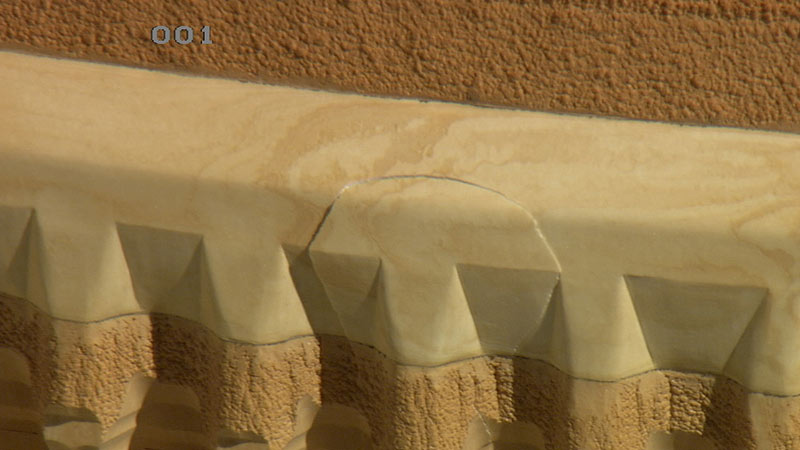New Cracks Found on Shuttle Discovery's External Fuel Tank

This storyhas been updated at 4:56 p.m. EST.
Two cracks have been discovered on the space shuttleDiscovery's external fuel tank, presenting further issues for the orbiter'splanned final launch.
Technicians began repair work on Discovery this morning(Nov. 10), and identified the cracks on the aluminum body of the tank. Anearlier crack had been discovered in the insulating foam layer that coats thetank.
After a series of delays and glitches prevented the orbiterfrom launching last week, NASA is aiming to lift off Discovery on a mission tothe International Space Station no earlier than Nov. 30.
NASA officials are evaluating images of the cracks todetermine how to repair them as the orbiter sits on its launch pad at NASA's KennedySpace Center in Florida.
"This is still really early on, so the exact repairmethod and schedule is still being figured out," NASA spokesman AllardBeutel told SPACE.com. "It's just a matter of the repair method and howbest to go about it. Right now, we're looking at repair options that can bedone at the pad."
Shuttle technicians have repaired similar cracks on externaltanks by removing the fractured aluminum and replacing it with a twice-as-thickstringer section, before replacing the foam. But, these repairs have previouslyonly been executed during the external tank production phase.
Breaking space news, the latest updates on rocket launches, skywatching events and more!
"We've seen these kinds of things before at the tops ofstringers," Beutel said. "They've done repairs to them before, butwe've never done them here at Kennedy. They were always done at Michoud."
NASA's Michoud Assembly Facility, located in New Orleans,La., manufactures and assembles critical hardware components for the space shuttles,including the massive orange external tanks.
The new cracks were found when engineers removed the externaltank's foam insulation, revealing two fractures about 9 inches (23centimeters) long on a section of the tank's metal exterior called thestringer, which is the composite aluminum ring located on the top of theintertank area. [GRAPHIC:NASA's Space Shuttle ? From Top to Bottom]
"The cracks were discovered in the area underneath thefoam that was dissected and removed," Beutel said. "Given where thefoam insulation crack was, and how it happened, the team actually suspected theywould find other things once they got in there."
The damage to the foam insulation of Discovery's externaltank was initially spotted during an inspection following the shuttle'scanceled launch attempt last week. The crack in the foam insulation wasestimated to be 20 inches (51 cm) long.
NASA officials are still determining the root cause for thetank damage, but have stated that the two cracks discovered today occurred duringoperations to drain the tank of its cryogenic propellant, following the mostrecent launch attempt on Nov. 5.
Meanwhile, engineers are also continuing work on a separateissue on Discovery's external fuel tank ? a component called the groundumbilical carrier plate (GUCP), where a hydrogen gas leakwas discovered last week.
Discovery's STS-133 mission managers are evaluating the datato determine the schedule of repairs and the next possible launch opportunityfor the orbiter.
After Discovery's final flight, NASA plans to retire theshuttle ? along with the rest of the agency's shuttle fleet ? in 2011.
The next possible time that Discoverycan attempt a liftoff to the International Space Station is Nov. 30 at 4:02a.m. EST (0902 GMT). Discovery is scheduled for an 11-day supply mission to thespace station to deliver a humanoid robot helper for the station crew and a newstorage room for the orbiting lab.
- GRAPHIC: NASA's Space Shuttle ? From Top to Bottom
- Gallery: Building Space Shuttle Discovery
- Video ? Space Shuttle Discovery: A Retrospective, Part 2, Part 3

Denise Chow is a former Space.com staff writer who then worked as assistant managing editor at Live Science before moving to NBC News as a science reporter, where she focuses on general science and climate change. She spent two years with Space.com, writing about rocket launches and covering NASA's final three space shuttle missions, before joining the Live Science team in 2013. A Canadian transplant, Denise has a bachelor's degree from the University of Toronto, and a master's degree in journalism from New York University. At NBC News, Denise covers general science and climate change.
